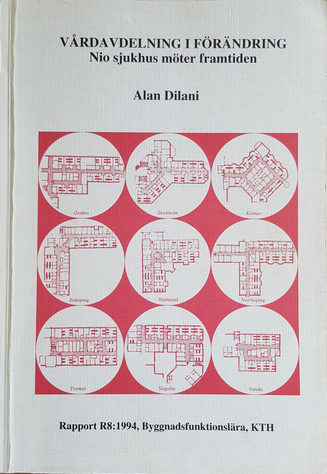17- Ken Yeang and Alan Dilani 2022. (Book pp. 255) ECOLOGICAL AND SALUTOGENIC DESIGN -FOR A SUSTAINABLE HEALTHY GLOBAL SOCIETY
This volume brings together several leading scientists and practitioners from around the world to discuss the ecological and salutogenic design principles for creating a healthy built environment. These principles and applications are the most important scientific topic of health promotion that provides the context for a healthy lifestyle. The challenge for ecological design is to provide a green context for a healthy society dealing with built infrastructure that creates clean air, clean water, clean food, and clean land, which in turn are necessary for human health and wellbeing. In this book, these principles are intertwined with those of salutogenic design, which support human health globally.
Contributors
Rossano Albatici Stefano Andi
Richard Ashby Paul Barach
Stefano Capolongo Karamjit Singh Chahal
Gunther De Graeve Leif Edvinsson
Ihab Elzeyadi Tye Farrow
Marco Gola Mark W. Johnson
Angela Lee Mane Mehrabyan
Parul Minhas Innocent Okpanum
Avani Parikh Derek Parker
Debajyoti Pati Kati Peditto
Naomi A. Sachs Brinda Sengupta
Mardelle M. Shepley
16- Dilani, Alan 2018. (Book pp. 441) Building for Health- Life Journey of a Kurdish Architect. Stockholm (English).
Dilani has quietly but persistently made his mark for the past three decades as an architectural guerrilla. Taking on nothing less than the built environment of the very places people go to restore their failing health, he proposes that healthcare facilities themselves need to become a part of the solution by embodying elements of the health they seek to deliver. The way hospitals, facilities for elderly care, public institutions, and other buildings need to change shape would grace them with the power to promote health. As an ardent scientific researcher, Dilani has investigated the psychosocial effect of much-needed transformations to the way hospitals look—and subsequently act upon the myriad of people within them. The story of Alan Dilani, from humble beginnings in a small Kurdish town to global citizen— may it serve to inspire young and old alike to pursue and manifest a better world for us all.
15- Dilani, Alan, Almas Heshmati, Serwan Baban (Editor) 2013. (Book pp. 555) Perspectives on Kurdistan’s Economy and Society in Transition, Volume II, Cambridge Scholars Publishing, London,
The second scientific World Kurdish Congress was held in October 2012 at Hewler with the theme of improving the quality of life, science and culture for progress in Kurdistan. The papers presented focused on various important aspects of culture, economy, education, health, industry and political science in Kurdistan. The objective of this conference was to create a network of academicians to exchange and develop knowledge and work together with the Kurdistan Regional Government on how to further enhance the progress within the Kurdish society. This volume is a collection of 26 studies presented at the Congress and includes an introduction by the editors and a summary report of the Congress. The topics presented here are diverse, covering several areas pertinent to the current Kurdish situation. The studies are divided into ten areas: namely, agriculture and rural development; diaspora; education and research; health and quality of life; industry; information technology and e-government; infrastructure and development; language; human rights; and politics. In the last part of the volume, the organization committee provides a compilation of recommendations from the Congress to the Kurdistan Regional Government.
Click the link below to download the book;
14- Dilani, Alan 2013. (Book pp. 238) Australian Healthcare Design 2000-2015 A critical Review of the design and build of Healthcare infrastructure in Australia. Stockholm (English)
Australian Healthcare Design 2000–2015 is a review of past, current and future projects and trends in healthcare design in Australia. It is a unique reference publication for researchers and practitioners working in the field of healthcare design, both within the region and internationally. Fronted by a collection of essays from prominent Australian academics and practitioners, it also contains a comprehensive catalogue of projects delivered during the most remarkable period of capital investment in health infrastructure ever seen in the region. The book aims to communicate to the rest of the world that the region has some of the most advanced healthcare buildings of our time. It will add to the ongoing dialogue that the Academy has developed over the last two decades. Design and health is changing. In Australia, as healthcare experiences an incredible revival; from a once-traditional stance, it is now creating inspiring healthcare environments that attract users with fascinating, inspirational spaces that support the healing process and promote health. The philosophical shift in thinking in both models of care and health facility design in Australia has been profound and, as a result, we are seeing new and innovative hospital design emerging in cities across the country.
13- Dilani, Alan, Almas Heshmati, Serwan Baban (Editor) 2012. (Book pp. 363) Perspectives on Kurdistan’s Economy and Society in Transition, NOVA Science Publisher, New York
The First World Kurdish Congress was held in October 2011 at Rotterdam with the theme of researching science and culture towards increased progress in Kurdistan. The papers presented focused on various important aspects of health, education, economy, culture and political science in Kurdistan. The objective was to create a network of academicians to exchange and develop knowledge on how to further enhance the progress within the Kurdish society. This book is a collection of 20 studies presented at the Congress. The presentation topics are diverse, covering several areas pertinent to the current Kurdish situation. The studies are divided into eight areas including: human rights and freedom; greater Kurdistan, education and nation building; diaspora; politics and international relations; corruption; health care and trauma; and economy, business and science and technology.
12- Dilani, Alan 2008. (Book pp. 151) A Health Promoting Approach on Prison Environment, (English summary) Karolinska Institutet, Design and Health Reserch Center, Stockholm
Architecture and design have been influenced by industrial societies for decades. Therefore, public buildings, like airports hospitals and prisons, have often been designed to accommodate the functionality and look like factories. Environmental qualities that are considered to be psychosocially supportive have been largely neglected. Psychosocially supportive design stimulates and engages people mentally and socially, and supports an individual’s sense of coherence. The aim of teh research is to identify design factors in the physical environment that can promote health and well-being. In this research we have chosen to shed light on psychosocially supportive design in prison environments. In prisons, the physical environment is an important concern, due to security reasons and most prisons are designed from a security and functional standpoint. It is of course important to focus on security aspects, but in this study, we will highlight factors in the prison environment that receive minimal attention. We believe that it is time to build prison environments that are psychosocially supportive and health promoting for both prison employees and inmates.
11- Dilani, Alan 2007. Keppie Design (Book pp. 104) UK Healthcare Design Review, (English) Published in UK, Keppie Design
The content of this book is an account of the UK healthcare design environment in the beginning of this century, very productive years in UK. This book has been provided during the 6th World Congress on Design and Health in Glasgow, Scotland. The Presentation of different projects in UK reflecting of the different team of architects and health planner with their own knowledge and experience on the time of planning. Thanks to David Stark who supported for the production of the book at Keppie Design and to the various contributors by presenting a range of subjects within design and health.
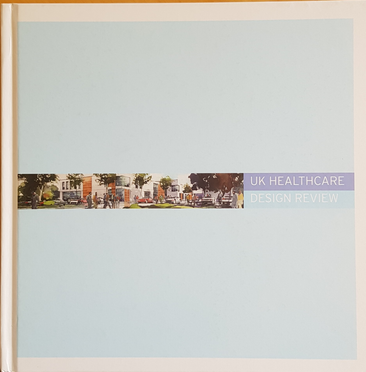
10- Dilani, Alan (Editor) 2006. (Book pp. 320) Design and Health IV– Future Trends in Healthcare Design, Proceeding Book of the 4th International Conference on Design and Health, in Frankfurt, (English)
Many of the papers presented in this book are case studies which strongly support the link between Design & Health. Good design is an essential component of healthcare; it forms the context and environments by which healthcare activities affect healing processes. Furthermore, the design and quality of health care has a great impact on staff health and wellbeing. Topics presented in this book include research on hospital performance, healthy workplace design and patient perception of healthcare environment, design for elderly, the presentation of major new hospital design of the world, the effects of art, music, garden on healthcare outcomes and fi nally the presentation of several PFI-Build projects in United Kingdom and the impact of Public-Private Partnership on healthcare design in UK. The diversity of papers in this book represents one voice in this ongoing discussion among disciplines. Doctors, nurses, designers, architects, artists, clinicians, administrators, researchers, psychologists, biologists, landscape architects, are carrying on a conversation between the covers of this book.
9- Dilani, Alan, Morelli, Agneta 2005. Health Promotion by Design in Elderly Care (Book pp. 106, English) Research program with grant from the Ministry of Health, Sweden
The purpose of this study is to investigate the requirements of health promotion by design in elderly care. The overall goal of the study is to create conditions through supportive design for promoting healthy living and working environments. Some perspectives on ageing and on elderly care in an organizational perspective are described. Part two of the study discusses life and health conditions of the elderly. An understanding of the research questions is clarified by first reviewing some of the leading theories on ageing. Thereafter follows an explanation of the interaction between human beings, the organizational culture and the physical environment. Focus is then shifted to the specific design conditions within elderly care and health promotion design factors. The method used in this study was based on the Future Workshop model consisting of workshops, seminars, field studies and a questionnaire directed to the staff. This report is addressed to researchers, health care professionals, decision maker, planner and developer working within elderly care as well as politicians, architects and those who care onSalutogenic design in elderly care.
8- Dilani, Alan, Morelli, Agneta 2005. Health Promotion by Design in Elderly Care ( (Book pp. 106 Swedish) Research program with grant from the Ministry of Health, Sweden
Syftet med denna studie är att undersöka hälsofrämjande design av boende- och arbetsmiljö för framtidens äldreomsorg. Det övergripande målet för projektet är att skapa förutsättningar för en hälsofrämjande boende- och arbetsmiljö genom stödjande design. Inledningsvis introduceras äldreomsorgens framväxt i Sverige. Olika perspektiv på åldrandet som fenomen och på äldreomsorgen som verksamhet beskrivs. I rapportens andra del diskuteras äldres livsvillkor. Genom att först återge några ledande teorier och synsätt på åldrandet, skapas en förståelse för rapportens frågeställningar. Därefter behandlas samspelet mellan människa, organisationskultur och den fysiska miljön. Fokus övergår sedan till äldreboendets specifika designförutsättningar och till hälsofrämjande designkomponenter i boendemiljön.
Resultaten av enkätundersökningen visade att personalens Känsla av sammanhang (KASAM) i genomsnitt var ganska stark. I Hälsoindex (HI) bedömdes den självskattade hälsan som ganska god. Signifikanta positiva samband identifierades mellan Känsla av sammanhang (KASAM) och fyra variabler i Hälsoindex (HI). Enkätundersökningens resultat visade på bristen av design komponenter i den fysiska miljön vilket har negativ inverkan på verksamheten i stort och på trivsel, hälsa och välbefinnande för boende och omvårdnadspersonal.
7- Dilani, Alan (Editor) 2004. (Book pp. 300) Design and Health III– Health Promotion through Environmental Design, Proceeding Book of the 3rd International Conference on Design and Health, in Montreal, Canada (English)
Holistic evaluation of workplaces from a multidisciplinary perspective, considering psychosocial, physical and cultural as well as ergonomics factors has so far been limited. Despite huge investments on workplaces and their impact, there has been lack of evaluations and feedback. Through Evaluations in an early stage we can avoid consequences of an unsuitable working environment and limit added costs for the future on both personal assets, in the form of sick days and reduced production. This book contains the latest research finding and knowledge about design and health among different discipline such as medicine, architecture, psychology, interior design, landscape architecture, science and art, music, public health and nursing sciences.
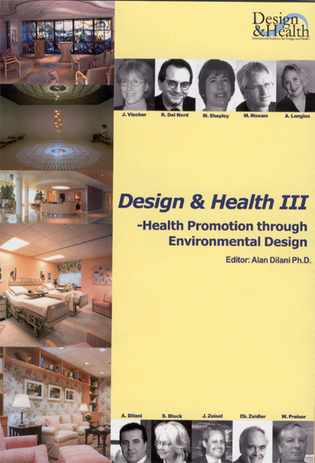
6- Dilani, Alan (Editor) 2001. (Book pp. 320) Design and Health – The Therapeutic Benefits of Design, Karolinska Institutet, Proceeding Book of the 2nd International Conference on Design and Health, in Stockholm (English)
This book is the result of the 2nd International Congress on Design and Health organized by the Karolinska Institute in Stockholm in June 2000. This book represents the lasted research about new approaches in healthcare design that does not foster functional efficiency, but also improve and strengthen health processes. It was first time that Alan Dilani launched his theory of Salutogenic design for the global scientists and experts within design and health and developed later as one of the most influential design theories in the field. The discussion of design and health is only one part of a larger lively ongoing debates that is addresses to different discipline such as medicine, architecture, psychology, interior design, landscape architecture, science and art, music, public health and nursing sciences and all those who care about design for a good life.

5- Dilani, Alan 1999. (Book pp. 275) Design and Care in Hospital Planning, Karolinska Institutet, National Institute for Psychosocial Factors and Health, Design and Health, (English)
Dr Alan Dilani presents a most informative and useful analysis of hospital planning in Scandinavia, mainly Sweden, and sheds important light on the dynamic character of healthcare systems and their influences on architectural design. The book is unique in examining these influences in Scandinavian context, and helps to fill a gap on the literature available in English on hospital planning and design. The final part pf the book presents an in-depth case study of the planning process and architectural approach for a large and highly innovative hospital project, university hopsital in Trondheim, Norwary. This book is a valuable source of ideas and new research for healthcare planner, architects and I believe that it will prove useful and interesting for many of those working in healthcare in other countries.
Professor Roger S. Ulrich, Ph.D. Texas A&M University
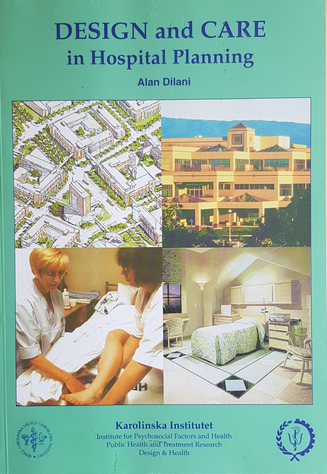
4- Dilani, Alan 1998. (Book pp. 125), Healthcare Buildings as Supportive Environments. County council Västernorrland, Sundsvall and Royal Institute of Technology KTH, (English and Swedish)
This book is the result of the national conference on Design and Health organized by Västernorrland County Council in cooperation with KTH, Royal Institute of Technology in Stockholm. The purpose of the conference was to throw light on some fundamental issues of the planning of healthcare buildings. How can architectural values be made a part of this complex system which so obviously dependent on politics, economy, and medically based demands? How can we assert the value of the physical environment in the nursing process? How could healthcare building experienced as supportive environments and how can this be achieved? We have discussed these issues in cooperation of different fields of knowledge expert within healthcare design from USA and the leading scientists from Royal Institute of Technology, KTH in Sweden.
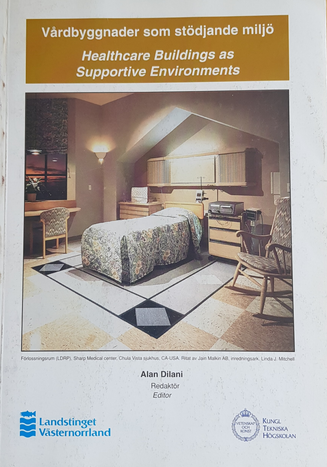
3- Dilani, Alan 1998. (Book pp. 297) Design och Omsorg i Sjukhusplaneringen, KTH, Royal Institute of Technology, Stockholm. (Swedish)
Syftet med denna doktorsavhandling är att analysera de strategier, kriterier och bärande idéer som styrd dagens sjukhusplanering, samt att visa hur dessa strategier mm vuxit fram över tiden. Avhandlingen omfattar tre analysnivåer. På den första belyses den arkitektoniska utvecklingen av sjukhuset ur ett översiktligt, historiskt perspektiv. På den andra analyseras nio vårdavdelningar ur ett närmiljöperspektiv. På den tredje nivån beskrivs och diskuteras planeringen av Universitet sjukhuset i Trondheim för att utifrån ett övergripande planerings-perspektiv belysa problematiken kring planering och produktion av ett stort sjukhus ur ett helhetsperspektiv. Avhandlingen bygger på ett empiriskt material som tagits from observation, intervjuer, granskning av relevanta dokumentation, litteraturstudie mm. Avhandlingen vänder sig till forskare, sjukhuspersonal, beslutfattare, projekt-ledare, utvecklare, planerare och fastighetschefer samt politiker och praktiserande arkitekter.
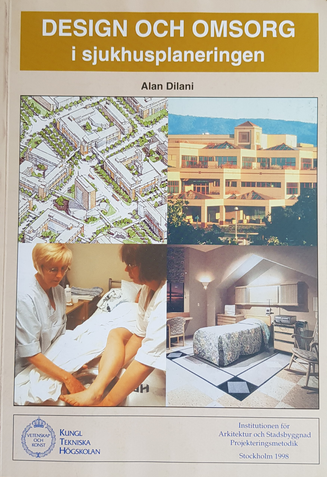
2- Dilani, Alan, 1997. (Book, pp.250), Human Centered Design fro Health care Buildings, SINTEF (English) Proceedings, 1st World Congress on Design and Health, Trondheim- Norway
This is the proceedings book of the 1st World Congress on Design and Health 1997 that has been organized in partnership with SINTEF and University hospital in Trondheim- Norway. The aim of the congress to discuss the most relevant topic of hospital design such as presentation of cutting-edge research in human centered hospital design. The presentation and discussion of current hospital project in Trondheim and exchange of ideas and stabling network that could influence the planning and development of ongoing projects. The proceeding book reflect the key questions discussed during the congress how to define human centered hospital deign and express design specifications. Furthermore, discussed the characteristics of environment that support healing process. How human centered approach affect functionality and efficiency of hospital. The congress was the foundation for the International Academy for Design and Health.
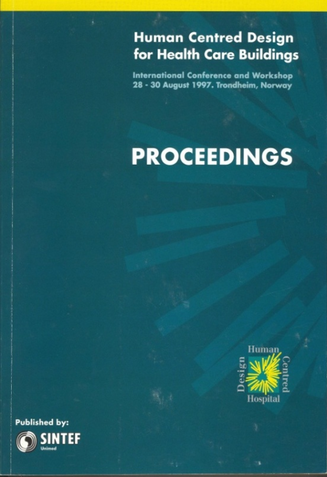
1- Dilani, Alan, 1994. (Book, pp.181), Licentiat Dissertation, Vårdavdelningar i Förändring, Nio Sjukhus Möter Framtiden (published twice 1994) KTH- A. Stockholm. (Swedish)
Syftet med denna Licentiatavhandling är att granska nio vårdavdelningar, representativa för somatiska avdelningar i nybyggda akutsjukhus i Norden. De intentioner och krav som gällde under planeringensskedet jämförs med hur lokalerna används och bedöms i nuläge och hur de förväntas möta kända eller förmodade krav på förändrade vårdformer och nya ekonomiska förutsättningar. Den svenska sjukvården genomgår genomgripande förändringar. Såväl övergripande strukturförändringar i vårdsystemet som den medicinsktekniska utvecklingen skapar nya förutsättningar. Karven på hushållning påverkar synen på lokaler som resurs. Patienter och personal ställer krav. Vårdutbud i en marknadsekonomi gör vårdmiljön till ett konkurrensmedel. Det handlar inte om en ”engångs-reform” utan om en kontinuerlig process som ställer vårdsystemet inför upprepade förändringskrav och nya förutsättningar. Sjukvården befinner sig mitt i en förändringsprocess som präglas av krympande ekonomiska resurser och den medicinsktekniska utvecklingen.
